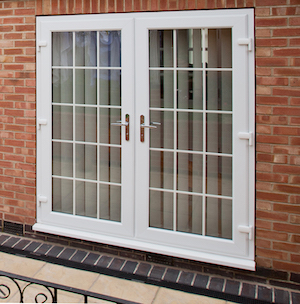
Common French Door Repair Issues
Add a review FollowOverview
-
Sectors Graphics
-
Posted Jobs 0
-
Viewed 4
Company Description
You’ll Never Be Able To Figure Out This French Door Restoration’s Secrets
French Door Restoration: A Comprehensive Guide
French doors, understood for their classy style and capability to bring natural light into an area, are a treasured element in many homes. In time, however, these doors can experience wear and tear due to weather components, absence of maintenance, or age. Restoring French doors not only improves their visual appeal but likewise improves functionality and energy performance. This post explores the procedure, products, and important factors to consider associated with French door restoration.

Comprehending French Door Basics
French doors normally consist of 2 panels, which might swing open or slide. Commonly made of wood, they can also be found in fiberglass or vinyl. Their special style enhances a home’s architectural appeal while flawlessly connecting indoor and outdoor spaces.
Common Issues with French Doors
The following are common problems that frequently require restoration:
- Warping: Changes in humidity and temperature level can cause wood to warp.
- Peeling or Cracked Paint: Exposure to the components can lead to paint deterioration.
- Damaged Hardware: Handles, locks, and hinges may become rusted or broken with time.
- Drafts or Air Leaks: Aging seals can lead to reduced energy effectiveness.
- Glass Damage: Cracked or fogged glass can affect visibility and insulation.
Restoration Process
Action 1: Assess the Condition
Before proceeding with any restoration, it’s essential to assess the condition of the French doors. Inspect for damages consisting of:
- Cracks in the wood
- Peeling paint
- Loose hardware
- Damaged glass
Action 2: Gather Your Tools and Materials
Depending on the work required, collect the needed tools and products:
| Tools | Products |
|---|---|
| Screwdriver | Sandpaper |
| Paintbrush | Guide |
| Caulk gun | Exterior paint |
| Hammer | Wood filler |
| Energy knife | Replacement glass |
| Determining tape | New hardware/locks |
Step 3: Prepare the Area
To avoid any mess, clear the area around the doors. Place a drop cloth on the flooring to capture dust or paint leaks.
Step 4: Remove the Doors
If substantial work is required, it may be helpful to remove the doors from their hinges. Use a screwdriver or hammer to separate the hinges carefully.
Step 5: Repair Any Damage
-
Fixing Wood: For warped sections or cracks, use wood filler or clamps to reshape locations. Sand down rough edges for a smooth finish.
-
Replacing Glass: If glass needs replacement, thoroughly pry the damaged glass out with an utility knife. Guarantee the brand-new glass fits comfortably into the frame.
-
Fixing Hardware: Replace any broken or rusted hardware with new, long lasting choices.
Step 6: Sanding and Painting
After repairs are complete, sand down the surface areas utilizing medium to fine-grit sandpaper. This will get rid of any paint remnants and offer a great surface area for painting.
- Priming: Apply a coat of primer for much better adhesion.
- Painting: Once dry, use two coats of premium exterior paint based on a weather-resistant formula.
Action 7: Reinstall Doors
Reattach the doors to the hinges, guaranteeing they swing efficiently. Check all locks and handles to validate proper function.
Step 8: Caulk and Insulate
Apply caulk around the edges to seal any gaps that can result in drafts. Making sure appropriate insulation will enhance energy effectiveness.
Step 9: Final Inspection
Inspect the restoration work completely. Open and close the doors to look for smooth operation, and make sure all brand-new hardware is protected.
Maintenance Tips for French Doors
A well-kept set of French doors can last for several years. Here are some maintenance tips to extend their life:
- Regular Cleaning: Clean the glass frequently to prevent accumulation of dirt and gunk.
- Inspect Hardware: Regularly examine the hardware for indications of wear, consisting of rust.
- Screen for Moisture: Especially in humid environments, screen for wetness that could lead to mold or rot.
- Repaint as Necessary: Refreshing paint every few years ensures protection versus the components.
- Inspect Seals: Regularly check weather seals for wear and change as required.
Often Asked Questions (FAQs)
Q: How typically need to I check my French doors?A: It is suggested to check your French doors a minimum of seasonally, or more frequently in locations with extreme weather. Q: Can I bring back French doors myself?A: Yes, with the right tools and persistence, lots of homeowners can effectively
restore their French doors. Q: What type of paint is best for French doors?A: Use premium exterior paint specifically developed tostand up to climate condition for the finest results. Q: Are there experts who concentrate on door restoration?A: Yes, lots of contractors and companies concentrate on door restoration and can use professional services. Restoring French doors is a fulfilling task that not just boosts a home’s appeal but also enhances functionality and energy effectiveness. Armed with the right tools, methods,
and a spirit of DIY, property owners can successfully bring their French doors back to life. Routine maintenance will make sure these elegant features continue to serve their function for years to come. With appropriate attention, French doors can remain a sensational focal point in any home, stimulating the beauty and grace they are understood for.